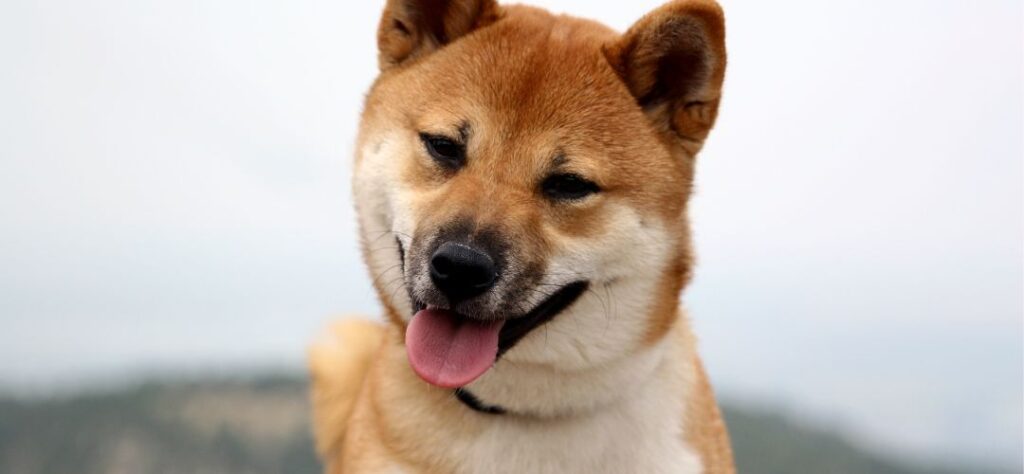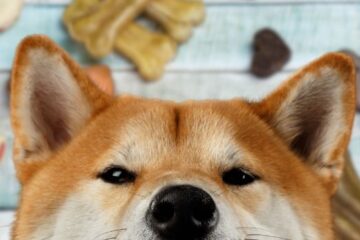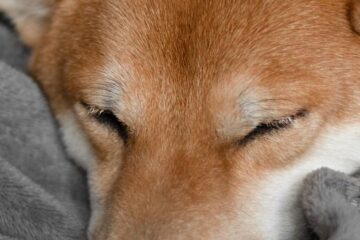Shiba Inu Shedding | Ah, the joys of having a furry friend. From their playful nature to their constant cheerfulness, they bring smilies and sunshine into our lives. But one thing that many pet owners don’t always consider is the fact that our beloved four-legged friends can get quite hairy…especially if you own a Shiba Inu. If your house looks like a fur-covered tornado has ripped through it, don’t worry! We’ve got some tips and tricks on how to manage your Shiba Inu’s shedding so you can make sure your living space is both pet and human-friendly. Read on for more information about Shiba Inu shedding and how to keep the mess under control!
First and foremost, it’s important to note that Shiba Inus are heavy shedders. They have a double coat which means they shed twice a year when the seasons change. During the fall and spring months, you might find more fur around your home than normal. Brushing is one of the most effective ways to manage shedding. Brush your pup on a regular basis – at least once per week- to get rid of any excess fur and keep their coat healthy and shiny. It will also help reduce the amount of fur in your house! Additionally, using special pet grooming products can help reduce shedding as well.
Finally, if all else fails, there are some things you can do to make cleaning up after your pup a bit easier. Invest in a vacuum with pet hair attachments, use lint rollers to remove fur from furniture and clothing, and keep your floors clean by mopping regularly.

How do I stop my Shiba Inu from shedding?
It’s impossible to completely stop your pup from shedding, but you can manage it with the right techniques. Regular brushing, grooming, and vacuuming are all great ways to keep your Shiba Inu’s shedding under control. Ultimately, the best way to ensure a clean home is by dedicating time and effort to keeping your pet healthy and happy!
What time of year do Shibas shed?
Shibas shed twice a year when the seasons change – usually in the fall and spring months. During this time, you might find more fur around your home than normal as they are shedding their winter coats to make way for lighter summer wear. Additionally, you might find random patches of fur throughout the rest of the year as your pup’s coat is constantly changing depending on temperature and weather conditions. Generally speaking, it’s best to expect heavier shedding during seasonal transitions so you can prepare accordingly.
To help manage shedding at any time of year, it’s important to remember that regular brushing is key. Brushing helps distribute natural oils throughout your pup’s coat which can keep it healthy and shiny while also preventing excess shedding. You should also make sure your Shiba Inu’s diet is balanced and that they’re getting enough exercise – two things that can keep their fur healthy and vibrant. Finally, investing in some pet grooming products can help reduce shedding as well. A good quality de-shedding brush and shampoo can go a long way in keeping loose fur off of furniture, clothing, and other areas of the home.
While it might seem like a daunting task at first, managing your Shiba Inu’s shedding doesn’t have to be difficult if you stay ahead of the game! With the right techniques and tools, you can both maintain a clean home and keep your pup happy and healthy – giving you the opportunity to enjoy plenty of cuddle time together. So don’t forget, it’s always important to take preventative measures so that shedding season doesn’t come and surprise you!
Do Shibas shed in winter?
Yes, Shibas do shed in winter. This is due to the fact that they have a double coat of fur that helps keep them warm during colder months. As temperatures drop and winter arrives, their inner coat starts to thicken while their outer coat becomes denser and courser in texture. In order to make room for this thicker winter coat, your Shiba will start shedding its thinner summer coat – resulting in increased shedding throughout the season.
In general, the amount of shedding can be very different from dog to dog as it’s directly related to their breed and individual genetics. Some Shibas might not shed too much at all while others may start shedding noticeably more than usual when the weather gets cold. Regardless of how much your Shiba sheds in the winter, it’s still important to manage their shedding to keep fur off of furniture, clothing, and other areas of the home.
Fortunately, there are several things that you can do to keep your Shiba’s shedding under control in the winter months. The first step is to invest in a good quality de-shedding brush that will help remove any loose fur from their coat. This should be done on a regular basis (at least once or twice a week) as this will help reduce the amount of fur flying around your house. Secondly, make sure that your pup is getting enough exercise during the colder months so that they don’t become bored and start producing extra body heat, which can lead to even more shedding.
Lastly, and perhaps most importantly, make sure that you are feeding your Shiba a healthy diet that is formulated specifically for their breed type and size. A good quality food will provide them with the essential vitamins, minerals, and nutrients they need to have a healthy coat and reduce excessive shedding.
What dog sheds the least?
The question of which dog sheds the least is a tricky one. There are many breeds of dogs and each one has its own individual traits. In general, there are some breeds that do have a tendency to shed less than others but it’s important to remember that all dogs will shed at some point in their life – the only difference is how much they shed and for how long.
A popular breed known for shedding very little fur is the Poodle. This breed comes in three sizes (standard, toy, and miniature) making them an ideal choice if you want a smaller dog with low shedding qualities. Poodles have dense curly coats which keep most of their hair from loosening up too much or shedding off around your home. They are also considered hypoallergenic, which means that they won’t aggravate allergies as much as other breeds.
Shih Tzus and Bichon Frises have similar characteristics to the Poodle when it comes to low shedding – they both possess a thick double coat that traps most of their fur and prevents it from getting loose and airborne. These two breeds are also smaller in size, making them ideal if you live in an apartment or don’t have a lot of space for a larger breed.
Other breeds known for low shedding include Maltese, Havanese, Chinese Crested Dogs, and Yorkshire Terriers. All these breeds feature either short coats or lack of undercoat which significantly reduces the amount of shedding they do.
When it comes to larger breeds, there are some that shed less than others but none of them can match the low shedding qualities of a smaller breed. Labrador Retrievers, Golden Retrievers, and Bernese Mountain Dogs all have dense undercoats which trap most of their fur, making these dogs appropriate for people who don’t want to deal with a lot of pet hair around the house.
No matter which breed you choose, one thing is certain: regular grooming and proper nutrition are key in reducing excessive shedding. All dogs need to be brushed regularly and provided with the essential vitamins, minerals, and nutrients they need to have a healthy coat and reduce the amount of fur they shed.
How long does Shiba shedding last?
The amount of shedding that a Shiba Inu experiences varies from individual to individual, but typically the breed sheds year-round. While some Shibas may shed more during certain times of the year than others, they usually have an ongoing cycle of shedding throughout the year. Shedding typically starts in late winter and continues into summer or early fall. During this period, the coat may become thicker and longer as new hairs grow in to replace those that were shed earlier in the season.
Why won’t my Shiba stop shedding?
Various factors can contribute to a Shiba Inu shedding excessively. Diet, environment, health problems or parasites, and even genetics may play a role. Nutritional deficiencies are especially common in dogs that live indoors exclusively, so it’s important to make sure your pet is getting the proper vitamins and minerals they need to be healthy.
Certain environmental factors such as temperature and humidity can also affect shedding patterns. It’s important to keep your dog comfortable by providing enough air circulation in their living areas and avoiding extremes of hot or cold temperatures. Additionally, if you have other pets in the home they may trigger a reaction from your Shiba resulting in increased amounts of shedding.
Conclusion | Shiba Inu Shedding
Shiba Inus are an adorable breed of dog, but their shedding can become a nuisance if it’s not taken care of properly. Shedding typically starts in late winter and continues into summer or early fall, with some Shibas shedding more than others during certain times of the year. To help reduce excessive shedding, owners should make sure their pet is fed regularly and provided with all the essential vitamins, minerals, and nutrients they need to maintain a healthy coat. Additionally, environmental factors such as temperature and humidity should be monitored to ensure your dog remains comfortable. And lastly, other pets in the home may trigger reactions in your Shiba which could lead to increased amounts of shedding. With the proper diet and environment for your Shiba Inu, you can help keep shedding to a minimum and ensure your pup stays healthy and happy.


